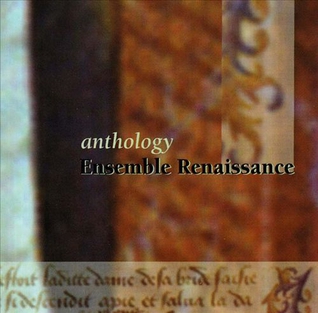The estampie is a medieval dance and musical form which was a popular instrumental and vocal form in the 13th and 14th centuries. The name was also applied to poetry.

Renaissance music is traditionally understood to cover music of the 15th and 16th centuries, later than the Renaissance era as it is understood in other disciplines. Rather than starting from the early 14th-century ars nova, the music of the Trecento was treated by musicology as a coda to Medieval music and the new era dated from the rise of triadic harmony and the spread of the ' contenance angloise ' style from Britain to the Burgundian School. A convenient watershed for its end is the adoption of basso continuo at the beginning of the Baroque period.

The music of Spain has a long history. It has played an important role in the development of Western music, and has greatly influenced Latin American music. Spanish music is often associated with traditional styles such as flamenco and classical guitar. While these forms of music are common, there are many different traditional musical and dance styles across the regions. For example, music from the north-west regions is heavily reliant on bagpipes, the jota is widespread in the centre and north of the country, and flamenco originated in the south. Spanish music played a notable part in the early developments of western classical music, from the 15th through the early 17th century. The breadth of musical innovation can be seen in composers like Tomás Luis de Victoria, styles like the zarzuela of Spanish opera, the ballet of Manuel de Falla, and the classical guitar music of Francisco Tárrega. Nowadays commercial pop music dominates.

The rebec is a bowed stringed instrument of the Medieval era and the early Renaissance. In its most common form, it has a narrow boat-shaped body and 1-5 strings. Played on the arm or under the chin, the technique and tuning may have influenced the development of the violin.

The Burgundian School was a group of composers active in the 15th century in what is now northern and eastern France, Belgium, and the Netherlands, centered on the court of the Dukes of Burgundy. The school inaugurated the music of Burgundy.

Juan del Encina was a composer, poet, and playwright, often called the founder, along with Gil Vicente, of Iberian drama. His birth name was Juan de Fermoselle. He spelled his name Enzina, but this is not a significant difference; it is two spellings of the same sound, in a time when "correct spelling" as we know it barely existed.

During the reign of Queen Elizabeth I (1558–1603), English art and high culture reached a pinnacle known as the height of the English Renaissance. Elizabethan music experienced a shift in popularity from sacred to secular music and the rise of instrumental music. Professional musicians were employed by the Church of England, the nobility, and the rising middle-class.
Tina Chancey is a multi-instrumentalist specializing in early bowed strings from the rebec and vielle to the kamenj, viol and lyra viol. She is Visiting Assistant Professor of Music at The College of William & Mary in Williamsburg, Virginia.
The Harp Consort is an international early music ensemble directed by Andrew Lawrence-King, specialising in Baroque opera, early dance-music, and historical World Music.
The Play of Daniel, or Ludus Danielis, is either of two medieval Latin liturgical dramas based on the biblical Book of Daniel, one of which is accompanied by monophonic music.
Giles Lewin is a British violinist and bagpiper. Currently a member of The Carnival Band, he was also a founding member of the folk band, Bellowhead.
Cancionero is the name of an early-music ensemble based in the Sevenoaks and Maidstone area of Kent who perform the songs and dance music of the Middle Ages and also early Renaissance music from the Tudor court.

Hortus Musicus is an Estonian ensemble that was established in 1972 by Andres Mustonen, a violin student of the Tallinn State Conservatory. Hortus Musicus specialises in performing early music, including 8th–15th-century European forms such as Gregorian Chant, Organum, Medieval Liturgic Hymns and Motets, the Franco-Flemish School, and Renaissance Music. The group also presents early, non-European styles including Indian Ragas, Israeli temple songs, Arabian mughams and Jewish music. The group's repertoire has also included pieces by 20th-century composers.
The Carnival Band is an English early music group. Their broad repertoire focuses on popular music from the 16th and 17th centuries, and traditional music from around the world. Presentation is informal and humorous, and in the spirit of medieval and renaissance Carnival. The band was founded by Andy Watts and Giles Lewin while they were members of the Medieval Players touring theatre company in the 1980s. They have had a long association with Maddy Prior.
Renaissance Ensemble Serbia is the first early music ensemble in Serbia and the second in south-eastern Europe, having been founded in 1968. Ensemble Renaissance usually focuses on the music of the Middle ages, Renaissance and Baroque. Occasionally, however, Ensemble performs modern music on ancient instruments.

The Cancionero de Palacio, or Cancionero Musical de Palacio (CMP), also known as Cancionero de Barbieri, is a Spanish manuscript of Renaissance music. The works in it were compiled during a time span of around 40 years, from the mid-1470s until the beginning of the 16th century, approximately coinciding with the reign of the Catholic Monarchs.

Anthology is the 13th album by Ensemble Renaissance, released in 1997 on the Al Segno label in Germany. The double disc is the greatest hits compilation of the Medieval and Renaissance music; the material on this Anthology are remasters from Ensemble's LPs Greatest Hits 3, Mon amy, Hommage а l'amour.
Kees Boeke is a Dutch recorder player and composer.
The Cancionero de Segovia or Cancionero Musical de Segovia (CMS), also known as Cancionero of the Segovia Cathedral, is a manuscript containing Renaissance music from the end of the 15th century and beginning of the 16th century. It contains a wide repertoire of works by mainly Spanish, French and Franco-Flemish composers. It is kept at the Segovia Cathedral Archives.








